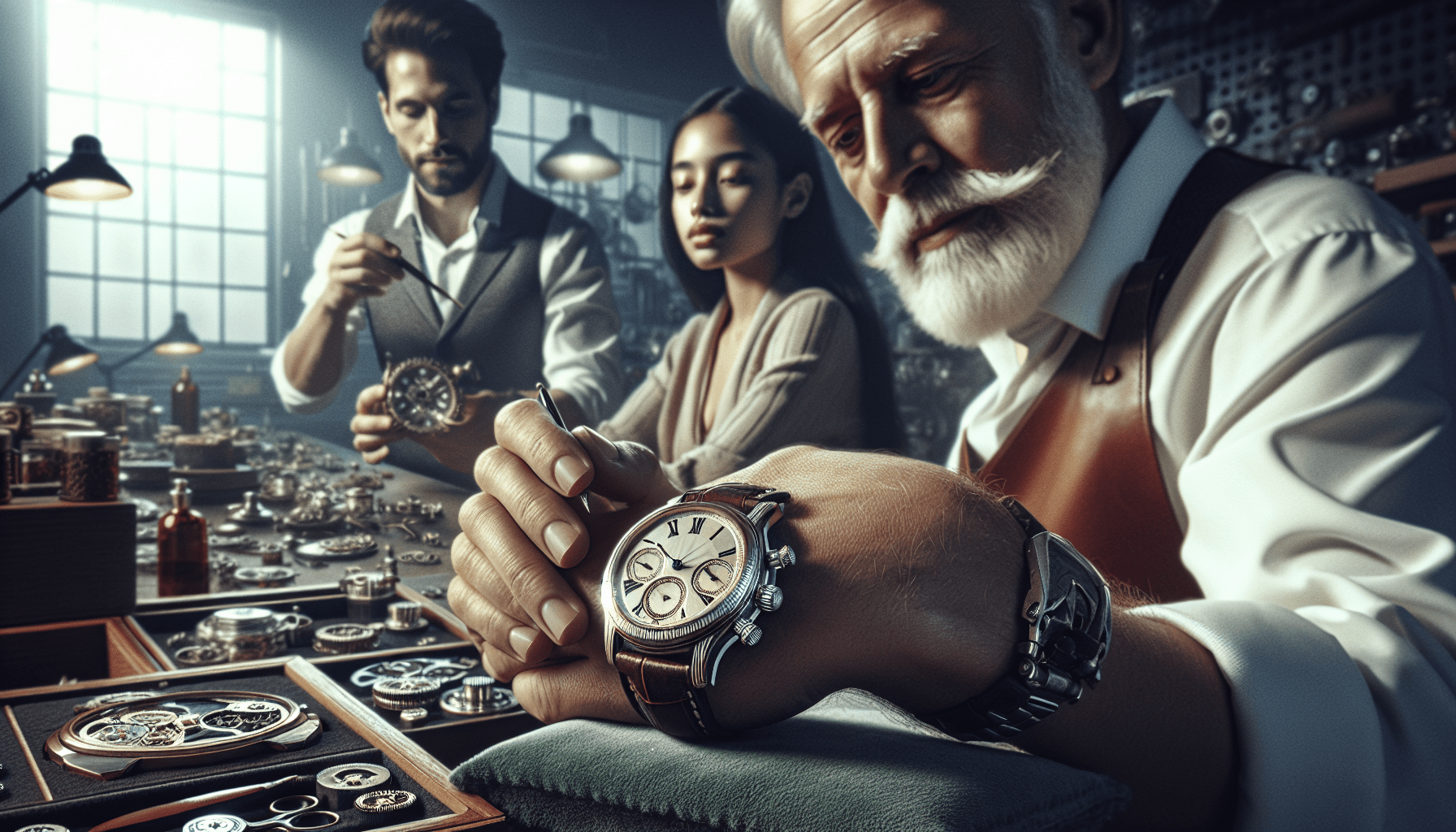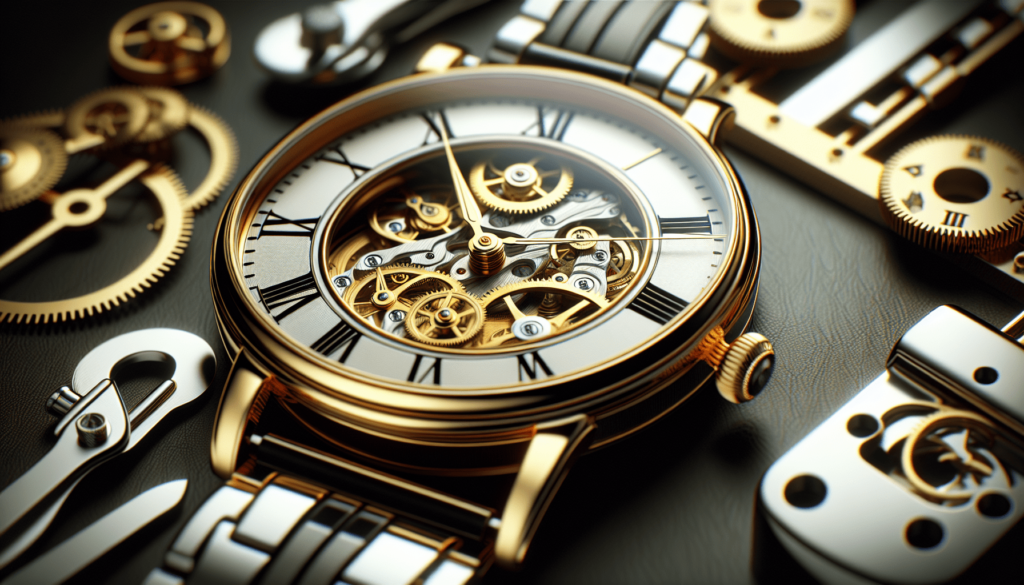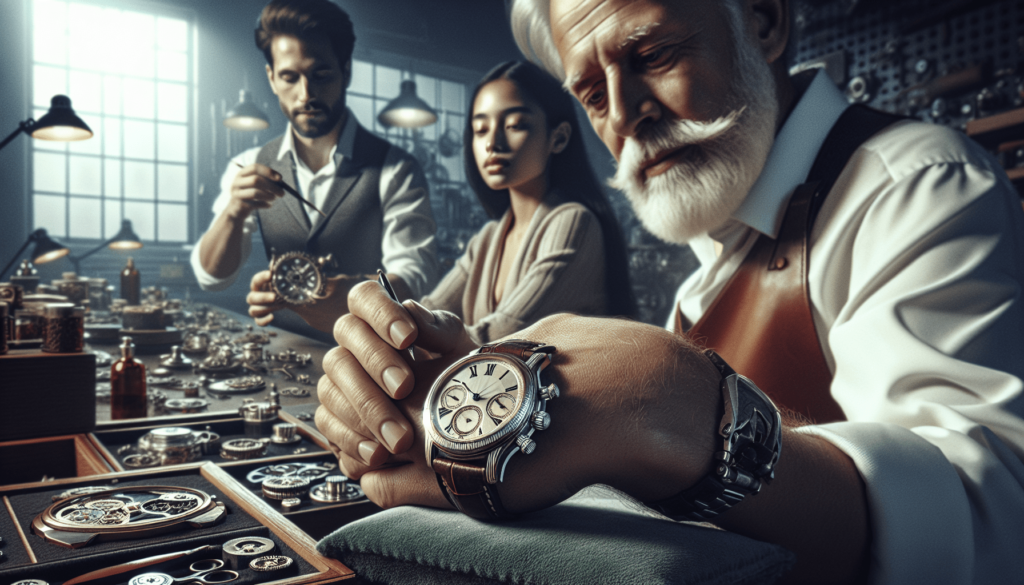Your cart is currently empty!

In-depth Guide to Analog Watches
You’ve always admired the timeless beauty and elegance of analog watches, but perhaps you’ve been unsure about diving into the world of horology. Well, fear no more. This in-depth guide is here to provide you with all the information you need to embrace and understand the intricacies of analog watches. From the history of these timepieces to their inner workings, we’ll take you on a journey that will deepen your appreciation for these mechanical marvels. So, get ready to explore the world of analog watches and unlock a new level of sophistication and style.
The History of Analog Watches
Analog watches are a timeless accessory that have a rich history dating back centuries. From their ancient origins to the modern analog watches of today, these timepieces have evolved and become an integral part of our daily lives. In this article, we will explore the history, components, movements, complications, materials, styles, maintenance, and the differences between analog and digital watches.

Ancient Origins
The concept of tracking time can be traced back to ancient civilizations, where sun dials and water clocks were used to measure the passing of hours. However, it was not until the 14th century in Europe that the first mechanical clocks were developed. These early clocks, known as verge escapement clocks, used a balance wheel and a foliot to keep time.
Evolution in the 20th Century
The 20th century saw significant advancements in watchmaking technology, leading to the widespread popularity of analog watches. In the early 1900s, the invention of the wristwatch revolutionized the way people wore timepieces. Previously, watches were primarily pocket watches, but the convenience and practicality of wearing a watch on the wrist quickly caught on.
Modern Analog Watches
In the modern era, analog watches have become more than just a tool for telling time. They are now considered a fashion statement, with a wide variety of styles, designs, and materials to choose from. Whether you prefer a classic dress watch or a sporty diver watch, there is a perfect analog watch for every individual.
Components of an Analog Watch
Analog watches consist of various components that work together to accurately display time. Let’s take a closer look at each of these components:
Watch Face
The watch face, also known as the dial, is where the time is displayed. It typically features hour markers, minute markers, and sometimes additional complications such as a date window or chronograph subdials.
Watch Hands
The watch hands are the movable indicators that point to the current time on the watch face. They are usually made of metal, and the most common hands include the hour hand, minute hand, and seconds hand.
Hour Markers
Hour markers are used to indicate the hours on the watch face. They can be in the form of numerals, Roman numerals, or simple hour indices.
Movement
The movement of an analog watch refers to the mechanism that powers the watch and makes the hands move. There are three main types of movements: mechanical, automatic, and quartz.
Crown
The crown is a small button-like component located on the side of the watch case. It is used to set the time, date, and other functions of the watch.
Case
The case is the outer shell of the watch that houses the movement and protects it from external elements. It is usually made of metal or a combination of metal and other materials.
Crystal
The crystal is the transparent cover that protects the watch face. It is typically made of mineral glass, sapphire crystal, or acrylic.
Bezel
The bezel is a ring that surrounds the watch face. It can be stationary or rotating and is often used for additional functionality or aesthetic purposes.
Strap or Bracelet
The strap or bracelet is the band that holds the watch securely on the wrist. It can be made of various materials such as stainless steel, leather, rubber, or fabric.
Clasp
The clasp is the mechanism that fastens and secures the strap or bracelet around the wrist. It can be a traditional buckle, deployant clasp, or a folding clasp.

Different Types of Movements
The movement of an analog watch refers to the mechanism that powers the watch and makes the hands move. There are three main types of movements commonly used in analog watches:
Mechanical Movements
Mechanical movements are the oldest and most traditional type of watch movement. They rely on a series of gears, springs, and levers to power the watch. Mechanical watches need to be manually wound either daily or regularly to keep them ticking.
Automatic Movements
Automatic movements, also known as self-winding movements, are a type of mechanical movement that eliminates the need for manual winding. They use a rotor that moves with the natural motion of the wearer’s arm to wind the watch automatically.
Quartz Movements
Quartz movements are the most common and affordable type of watch movement. They use a battery to power a quartz crystal, which vibrates at a precise frequency. These vibrations are then converted into electrical pulses that drive the movement of the watch hands.
Analog Watch Complications
Watch complications refer to any additional functions or features beyond the basic timekeeping function. Analog watches can have various complications, depending on their design and purpose. Some of the most common complications are:
Date Function
The date function is a simple complication that displays the current date on the watch dial. It is usually indicated by a small window or subdial.
Day Function
Similar to the date function, the day function complication displays the current day of the week. It is often indicated by a small window or an additional hand on the watch face.
Multiple Time Zones
Analog watches with multiple time zone complications allow the wearer to keep track of time in different parts of the world simultaneously. They typically feature additional dials or subdials to display the extra time zones.
Chronograph
A chronograph complication adds stopwatch functionality to an analog watch. It usually features additional pushers and subdials to measure elapsed time, minutes, and seconds.
Moon Phase
The moon phase complication tracks the lunar cycle and displays the current phase of the moon. It is often depicted by a small disc or aperture on the watch face.
Power Reserve Indicator
A power reserve indicator complication shows the amount of power left in a mechanical or automatic watch’s mainspring. It provides the wearer with an indication of when the watch needs to be wound or worn to maintain accuracy.
Tourbillon
A tourbillon complication is a highly complex mechanism that aims to counter the effects of gravity on the watch’s movement. It consists of a rotating cage that houses the escapement and balance wheel.
Perpetual Calendar
A perpetual calendar complication is designed to automatically adjust the date, day, month, and sometimes even leap years. It can accurately display the correct date without the need for manual adjustments, even in leap years.
Materials Used in Analog Watches
Analog watches can be made from a wide range of materials, each offering different aesthetics, durability, and functionality. Some common materials used in analog watches are:
Stainless Steel
Stainless steel is a popular choice for watch cases and bracelets due to its durability, scratch resistance, and timeless appearance. It is also resistant to corrosion, making it suitable for everyday wear.
Gold
Gold is a luxurious material often used in the manufacturing of high-end analog watches. It adds an elegant and prestigious touch to the watch’s design, and variations such as yellow gold, white gold, and rose gold offer different aesthetics.
Titanium
Titanium is a lightweight and durable material that is often used in sporty and outdoor analog watches. It has excellent strength-to-weight ratio and is hypoallergenic, making it suitable for those with sensitive skin.
Ceramic
Ceramic is a modern material gaining popularity in analog watches. It is highly scratch-resistant, lightweight, and offers a sleek and modern appearance. Ceramic watches often come in black or white color options.
Leather
Leather is a classic and timeless material commonly used for watch straps. It is comfortable to wear, ages beautifully, and adds a touch of sophistication to any analog watch.
Rubber
Rubber or silicone is a versatile material commonly used in sport and diving watches. It is durable, easy to clean, and provides a comfortable fit even in humid or wet conditions.
Analog Watch Styles
Analog watches come in various styles, catering to different preferences, occasions, and lifestyles. Here are some of the most popular styles:
Dress Watches
Dress watches are elegant and sophisticated timepieces designed for formal or dressy occasions. They typically feature thin profiles, minimalist designs, and often come with leather straps and precious metal cases.
Sports Watches
Sports watches are built to withstand rugged environments and are suitable for active individuals. They often feature robust cases, water resistance, and additional functions such as chronographs, tachymeters, and rotating bezels.
Aviator Watches
Aviator watches, also known as pilot watches, were originally designed for pilots and aviation enthusiasts. They often feature large dials, clear legible numerals, and additional functions such as a slide rule bezel for calculations.
Diver Watches
Diver watches are specifically designed for underwater use and are popular among scuba divers and water sports enthusiasts. They have high water resistance, luminous markers, and unidirectional rotating bezels for tracking dive time.
Field Watches
Field watches have a rugged and utilitarian design, inspired by military timepieces. They often feature durable cases, easy-to-read dials, and sometimes include additional functions such as a compass or a tachymeter.
Choosing the Right Analog Watch
When choosing an analog watch, there are several factors to consider to ensure you select the right timepiece for your needs and preferences:
Consider Your Style
Analog watches are not only functional but also a reflection of personal style. Consider whether you prefer a classic, minimalist, sporty, or statement-making design that complements your overall aesthetic.
Consider Your Lifestyle
Think about your daily lifestyle and the activities you engage in regularly. If you lead an active lifestyle, a durable and water-resistant sports watch may be more suitable. If you frequently attend formal events, a dress watch with a sleek design may be the best choice.
Consider Your Budget
Analog watches range in price from affordable options to luxury timepieces. Set a budget that aligns with your financial means and consider the brand, materials, and complications you desire within that range.
Analog Watch Maintenance
Proper maintenance is essential to ensure the longevity and accuracy of your analog watch. Here are some maintenance tips to keep your watch in optimal condition:
Regular Cleaning
Clean your watch regularly with a soft, lint-free cloth to remove dust, dirt, and smudges. Avoid using harsh chemicals or abrasive materials that may damage the case, crystal, or strap.
Battery Replacement
For analog watches with quartz movements, the battery needs to be replaced when it runs out. It is recommended to have the battery replaced by a professional watchmaker to avoid any potential damage to the movement.
Water Resistance
If your analog watch is water-resistant, ensure that the seals are checked and replaced periodically to maintain its water resistance. Avoid exposing the watch to excessive heat or pressure, as this can compromise its water-resistant properties.
Servicing
Periodic servicing by a professional watchmaker is recommended to keep your analog watch in optimal working condition. This includes lubrication, adjustment, and cleaning of the movement to ensure accuracy and longevity.
Analog Watches vs. Digital Watches
While analog watches have their charm and traditional appeal, digital watches offer unique advantages. Here are some of the key differences between analog and digital watches:
Design and Aesthetic Appeal
Analog watches are often favored for their classic and timeless designs. They exude a sense of elegance and sophistication, making them suitable for both formal and casual occasions. On the other hand, digital watches have a modern and futuristic appearance, with bright displays and often more functionality.
Accuracy and Precision
Analog watches rely on mechanical or quartz movements to keep time and are generally accurate within a few seconds per day. Digital watches, on the other hand, use electronic components and offer precise timekeeping down to the second.
Battery Life
Analog watches with mechanical or automatic movements do not require batteries as they are powered by winding or the natural motion of the wearer’s arm. Quartz analog watches with batteries can last for several years before needing replacement. Digital watches, however, require regular battery changes depending on their usage.
Functionality
Digital watches offer a wide range of functions and features, including alarms, timers, countdowns, multiple time zones, and more. Analog watches, while primarily focused on timekeeping, can have additional complications such as chronographs or calendar functions.
Famous Analog Watch Brands
Numerous watch brands have made a name for themselves in the world of analog watches. Here are some of the most renowned brands:
Rolex
Rolex is a Swiss watchmaker known for its luxury and prestige. The brand is synonymous with high-quality timepieces that are crafted with attention to detail and precision.
Omega
Omega watches have a rich heritage and are known for their iconic designs and innovative technology. The brand has a strong association with space exploration and has been the official timekeeper of the Olympic Games.
TAG Heuer
TAG Heuer is a Swiss luxury watch brand that combines tradition with modern sports-inspired designs. They are known for their high-precision chronographs and association with motorsports.
Breitling
Breitling is a Swiss watchmaker specializing in aviation-inspired timepieces. They are known for their robust build quality and features such as slide rule bezels and chronographs.
Seiko
Seiko is a Japanese watch brand known for its precision and affordability. They offer a wide range of analog watches, including both mechanical and quartz movements.
Tissot
Tissot is a Swiss watch brand that combines traditional craftsmanship with modern innovation. They offer a diverse collection of analog watches, ranging from classic dress watches to sporty chronographs.
In conclusion, analog watches have a rich history and have evolved over time to become not just timekeeping devices, but also fashion accessories and statement pieces. From ancient origins to modern innovations, analog watches offer a timeless and elegant way to keep track of time. Whether you prefer a classic dress watch or a rugged sports watch, there is a perfect analog timepiece out there to suit your style, lifestyle, and budget. With proper maintenance and care, an analog watch can be a companion that lasts a lifetime.